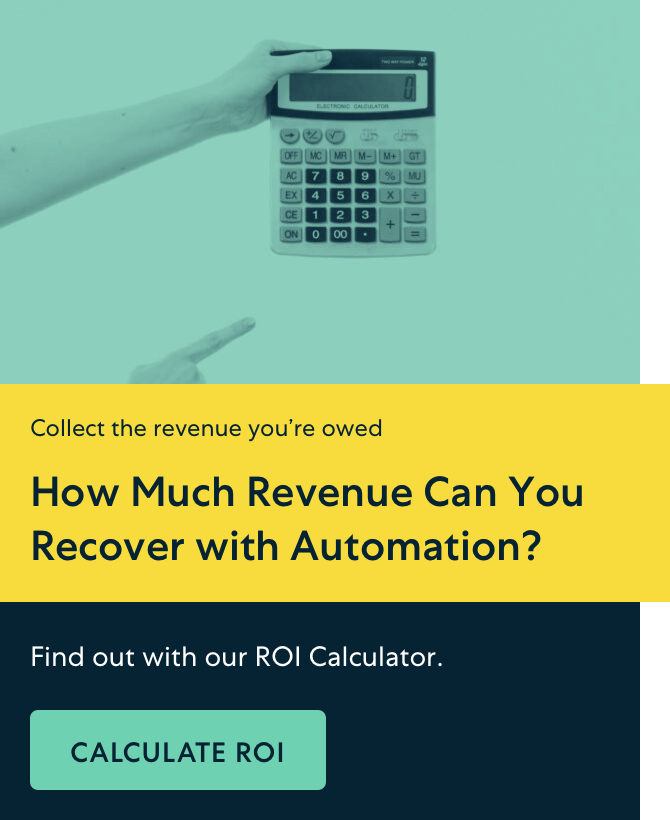Invoicing is essential for service-based businesses to itemize charges and get paid, but it’s time-consuming when done manually.
With invoicing software, you can automate the entire process of creating and sending invoices, adding taxes, tracking down unpaid invoices, processing online payments, and revenue recognition.
However, there are many invoicing software apps out there, and it can be challenging to find the right invoicing tool for the specific needs of your business.
This step-by-step guide will show you the essential features of a quality invoicing tool and how to nail down the best invoice billing software for your business.
Let’s get started.
TL;DR
- The first key steps are identifying your unique business needs and fishing out the invoicing platforms with all the essential features every quality invoicing software should have.
- Then you should create a shortlist of invoicing solutions with affordable pricing plans and your must-have features.
- Once you have your shortlist, you can find the invoicing billing software that aligns best with your needs through an ROI analysis.
Step 1: Define Your Business Needs
Itemizing the specific capabilities you need from your invoicing tool will make it easier to find billing software tailored to your needs.
You must review your current billing processes to identify your specific business requirements.
Ask yourself the following questions to build a holistic picture of your billing process:
1. Do you have industry-specific needs?
Some industries have unique quotation and invoicing practices that require tailor-made templates and features to create relevant invoices.
For example, small business owners in the construction industry will require a robust invoicing tool that lets them send detailed estimates, create contracts, and track fluctuating labor, materials, and equipment expenses.
In such a situation, you are better off with billing software with customizable invoice templates tailored to your industry niche.
2. How complex is your billing process?
Your deductions at this stage will determine whether you can save money by opting for a simple, online invoicing software that lets you create generic templates to be emailed to your clients, or you need an invoicing software with additional advanced features like automated recurring billing, expense tracking, and auto reminders.

You’ll need to consider a range of issues including:
- The volume of recurring invoices you generate per month
- How you charge clients: hourly, daily, weekly, monthly, or per project
- The types of payment methods preferred by your customers
- Whether you have international clients and thus need to accept payments in multiple currencies
- The additional project management features you may require for greater efficiency (expense tracking, payment reminders, revenue recognition, etc.)
3. Do you require integration with your existing software systems?
Your company likely already has an ecosystem of software tools for payroll, accounting, inventory management, CRM, ERP, and similar tasks.
If that’s the case, you must ensure your choice of software will seamlessly integrate with your existing software apps, and that it’s flexible enough to accommodate future integrations.
An option that may be cost-effective for some business owners is to opt for an all-in-one solution that includes billing, expense tracking, reminders, accounting, payroll, CRM, and other finance-related capabilities.
4. What’s your budget?
You must determine the amount you are willing to spend on periodic subscription payments for invoicing software.
If there are significant financial constraints, you may have to prioritize essential features when evaluating your invoicing software options.
You have to be realistic about your financial bandwidth and avoid overspending by staying away from software platforms with exotic features that are not absolutely necessary for your invoicing requirements.
Also, ask other small business owners in your niche about their invoicing software and how much they spend to purchase the software for their business.
Step 2: Evaluate Core Features
There’s no one-size-fits-all invoicing software solution because every business is different and will need specific features tailored to their needs.
For example, a freelance copywriter may only need a free online invoice generator to create two or three professional invoices each month.
In contrast, a business coach who bills clients by the hour will require a paid invoicing tool with features like time-tracking, online payment processing, project management, calendar management, and other required bells and whistles.
That being said, there are some essential features that every quality invoicing software should have, and we will highlight them below.
We should add that the only way to evaluate your billing software options and ensure they have all the features listed below is to test them. Test run a demo version of the software or sign up for a free version and try creating and optimizing a few invoices to examine the software’s functionalities in a realistic scenario.
Here are the features to be on the lookout for:
Customizable templates
Branding gives your business the unique personality that helps your clients distinguish your company’s invoices from the many invoice emails they get each month.
It also creates a credible and professional image for your business, especially if you are just starting out.
Your invoice software should have customization features that let you modify invoice templates to fit your branding requirements.
Among other things, you must be able to:
- Add your company logo
- Infuse your brand colors
- Add custom fields
- Change font styles and sizes
- Add personalized client-specific messages
Recurring billing
You may run a business where customers purchase the same service or product repeatedly. It’s also possible that you own a SaaS company with a subscription-based pricing model.
Your invoicing software must support automated recurring billing so you can process payments efficiently.
Trying to manually send recurring invoices to a growing group of customers in every billing cycle will only lead to late payments and inefficient revenue collection.
An automated system will create a streamlined process where you can schedule reminders and payment collection, saving you precious time and resources that can be better spent finetuning your services to meet the needs of your customers.
Payment tracking
Too many overdue invoices will negatively impact your cash flow and can even damage your relationship with key clients.
Customers can forget upcoming bills sometimes, and there will be those you will simply choose to ignore making their scheduled payment unless you remind them.
Your invoicing solution must let you easily track payment due dates and send payment reminders so you won’t have any late payments falling through the cracks.
Payment options
There is a wide range of payment options available to customers today, including debit/credit card payments, ACH payments, eWallets, checks, cryptocurrency, and cash.
Each customer will have their own preferences and your invoicing software should give you the flexibility to cater to different customer needs.
Apart from support for the major payment mediums, you must also be able to accept and process both offline and online payments.
For online payments, your invoice software should let you send professional invoice emails with a payment link that customers can use to transfer funds to your business account.
For offline payments, you must be able to enter the details of the transaction into your software and it should automatically record it as part of your entire customer billing history and revenue inflow—both offline and online.
Reporting tools
Your invoicing software should let you track payments and the financial health of your business in real time.
You should be able to view upcoming payments, outstanding bills, payment failures, and tracked expenses directly from a single dashboard.
You should also be able to analyze and generate detailed reports on key financial issues like your cash flow, revenues, taxes, and much more.
Payment gateway
You need a payment gateway to accept online payments and facilitate recurring billing.
The payment gateway provides a platform for your customers to select their preferred online payment method and once they make their scheduled payment, it will relay the information to your payment processor to facilitate the transfer of funds from your customer’s bank account to your business account.
Most invoicing software solution providers use payment gateways provided by third-party payment processors and since you will pay payment processing fees on each transaction, you must ensure your provider is linked to a reliable and fair payment processor.
For example, Stax Bill, an all-in-one billing and invoicing platform, uses Stax Pay’s payment gateway to help its customers efficiently accept and process credit, debit, and recurring payments.
Step 3: Consider Integration Capabilities
Seamless integration between your invoicing software and your existing ecosystem of business software apps ensures the efficient flow of data throughout your tech stack.
For example, an integrated tech stack will ensure you can easily pull customer profile information from your CRM software to create a fresh invoice on your billing software without having to manually enter the data.
The first thing to do is to access your current tech stack to see how your software tools currently communicate with each other. Look at the type of information shared between those platforms and how the data is transmitted from one software tool to another.

You should also examine your hardware tools. Profile their current capacity to efficiently host complex software tools and determine whether you may need to upgrade them to accommodate the incoming billing and invoicing software solution.
Once you have a clear picture of how data is transmitted within your current software ecosystem and the limitations of the hardware infrastructure that hosts the software platforms, you can now start comparing invoicing software options to see which platform is most compatible with your tech stack.
You should use free trials to link each invoicing platform to your existing software tools and then simulate transfers of data needed to complete routine invoicing tasks.
Some of the key issues you should focus on during this period are:
- Trouble-free integration with your current software apps
- Data synchronization quality (accuracy and speed)
- Availability of relevant APIs
- Support for custom data formats
- Hardware and network compatibility
By testing and evaluating each invoicing software based on the criteria listed above, you should be able to create a shortlist of invoicing tools that offer the best fit for your business.
If you are opting for an all-in-one solution, you will have an expanded list of factors to consider, including:
- Seamless data migration from existing systems
- Quantifiable increase in efficiency
- Full buy-in from company staff on the advantages of an all-in-one platform
- Value for money over a disparate ecosystem of software tools
- Credible boost in customer satisfaction
Step 4: Assess Security and Compliance Standards
The invoicing process—especially when online payments are made—involves the transfer and manipulation of sensitive customer financial data that you are obligated to safeguard effectively.
In the third quarter of 2024 alone, 423 million data records were breached globally. So, the need to protect sensitive customer information is crucial to retaining the trust of your customers and protecting the reputation of your business.
There is also the need to ensure compliance with finance industry regulations like PCI DSS (payment card industry data security standard) and user data protection rules like GDPR (general data protection regulation).
You can ensure the security of your customer data and adherence to relevant regulations by opting for an invoicing software solution provider that prioritizes security features and complies with security regulations.
When comparing invoicing software platforms, here are the key criteria for weighing compliance with industry security standards:
- The use of robust data encryption and protection mechanisms: the provider must be using Advanced Encryption Standard (AES-256) protocols and there should be safeguards to help prevent unauthorized access to sensitive data.
- Adherence to industry-specific regulations: the provider must clearly state on its website that it’s fully compliant with industry regulations, especially GDPR rules and PCI DSS.
- Regular security and maintenance updates: the provider must provide full clarity on its commitment to providing periodic and event-driven security updates that help ensure your software is secure against ever-evolving cybersecurity threats.
- Availability of role-based access control: the provider must give you the means to control the extent to which each user in your organization can access sensitive customer data and there should be features like two-factor authentication to help limit the impact of identity theft and fraud.
- Secure data centers and regular data backups: the provider must have robust physical security mechanisms at its data centers and there should be provision for data backups to external secure vaults to provide reassurance in the event of system failures or unforeseen events.
Step 5: Examine Scalability and Customization Options
You must consider the potential for business expansion and the increased invoicing needs that will come with such growth when evaluating your invoicing software options.
Take the time to examine your long-term business plans and then outline the essential features an invoicing platform must have if it’s to be able to accommodate the needs of your expanded client base and complex business needs.
Failure to pick a scalable invoicing software may cause you to make significant overhauls to your invoicing workflows in the future together with the disruptions and expenses that will come with such a transition.
When trying to determine whether an invoicing platform is scalable, look at factors like:
- Customizable features
- Room for user capacity expansion
- Proven track record of platform evolution
- Room for data storage expansion
Step 6: Evaluate User Experience and Support
It will be difficult to convince your team members and staff to adopt a new invoicing software tool if its interface is not user-friendly.
The only way to know if the software is user-friendly is by testing it either through a demo version or a free trial plan.
Some key features of a user-friendly invoicing software solution are:
- An intuitive user interface
- It won’t require extensive onboarding training before you get the hand of it
- Customizable templates
- It comes with clear in-app instructions for each invoicing feature
Once you have determined that the invoicing software offers an excellent user experience, the next important step is to evaluate the provider’s customer support options.

You will need reliable customer support services from your software provider to deal with technical issues that may prop up over time. Failure to swiftly troubleshoot such issues can severely disrupt your invoicing process.
Consider the factors listed below when evaluating the quality of a provider’s customer support services:
- Availability of robust customer support channels (email, phone, live chat, social media)
- 24/7 customer support (some providers only provide customer support during business hours and it may even be limited to some time zones)
- Availability of an online knowledgebase with articles and video tutorials so you can identify and troubleshoot minor issues yourself
- Robust new user onboarding support
- Availability of a dedicated account manager if your business is big enough to require such exclusive support
Step 7: Compare Pricing Models
Invoicing software solution providers use a wide range of pricing models and it’s important that you understand the peculiarities of each model to be able to select the right option for your business needs.
There are four major pricing models used by invoicing software providers, and they include:
Flat-rate pricing
Under this pricing model, every user pays a fixed subscription fee per month or per year for full access to the invoicing software platform’s features.
This model is advantageous if your company has a large number of users since you will be paying a single fee to obtain full access for your entire organization. In such a situation, it will be cheaper than usage-based pricing and tiered pricing.
If you are a single user or your organization doesn’t need all of the platform’s features, a provider offering an alternative pricing model may be a better option for your business.
Tiered pricing
This model offers multiple packages divided into tiers, with the lowest and cheapest tier offering the least features, while the highest and most expensive tier offers the full range of features.
Tiered pricing is the most common type of software pricing model, and each tier will include a range of platform functionalities and a fixed number of users.
For example, the lowest tier may limit you to the generation of 20 invoices per month and permit two users in your organization, while the highest tier may let you generate unlimited invoices per month, permit unlimited users, and give you access to features like expense tracking and automatic payment reminders.
Tiered pricing works for businesses of all sizes since it lets you select a package of features that fits your budget and current business needs.
Usage-based pricing
Under this model, you are charged based on how much you use the platform during a specific billing cycle.
For example, if you generate 50 invoices for January you will be charged more, and if you generate 20 invoices for February, you will be charged less.
This model is great if you are a freelancer with a limited number of clients or your business is in a sector where customer demand ebbs and flows.
You will be able to save money in a Pay As You Go model since you are only required to pay when you actually use the platform and for the extent to which you use the platform.
Freemium pricing
This model offers the basic features of the invoicing software platform for free and then charges users a subscription fee for access to more advanced features.
Freemium invoicing is an excellent option for small business owners with limited invoicing needs that can be catered for by the basic features offered in the free plan.
It can also be a good option if you own a new business and you are yet to get a firm grasp of the size of your customer base. You can start with free invoicing software and as your business grows, upgrade your subscription to a paid plan with all the features required for your expanded business needs.
Once you have identified the most suitable pricing model for your business and you have created a shortlist of invoice billing platforms that have all the core billing features you require while also offering the ideal pricing model, you can then compare the invoicing providers on your list using the following criteria:
- Transparent pricing: the software vendor must provide full clarity on its periodic subscription fees and there shouldn’t be any hidden fees buried under miles of text in the contract agreement.
- Cost of user training: you must factor in the resources required to train your staff on the new software. Invoicing software with a sharp learning curve will be more costly to onboard.
- Potential ROI (return on investment) analysis: after you have collated the cost of purchasing each software (subscription fee + cost of addons + hardware costs + onboarding costs), you should calculate the ROI of each platform to which provider offers the most value for money.
Step 8: Finalize Your Decision
At this point, you have used the seven preceding steps to narrow down your shortlist of invoicing software solutions to the two or three most suitable platforms.
Now, use the following tips to make your final pick:
Consider online reviews and customer testimonials
Search the internet and read reviews from current and existing customers to see what they have to say about each platform on your shortlist.
Look for patterns in customer feedback on user-friendliness, customer support, and platform reliability.
You should also review user testimonials on the invoicing software solution provider’s website.
Reading testimonials will let you easily identify how other users have successfully used the platform’s features in real-world scenarios and the exact nature of the impact it had on their invoicing workflow.
That will help you narrow down the specific platform that has repeatedly engineered the type of transformation you want to see in your business.
Consider the availability of must-have features
Your answers to the questions in step one of this guide would have helped you narrow down the core invoicing workflow objectives of your small business.
Now, you will evaluate the features offered by each platform to see which software meets your critical needs the most.
For example, a freelancer with few clients may prioritize a mobile app-based invoicing tool that lets you easily create and send invoices and manage your entire business finances on the go via your smartphone or tablet.
In contrast, a larger business with extensive financial reporting needs may prefer a robust platform-agnostic invoicing software that supports recurring invoices and comes with developer-friendly features like APIs that will let you easily integrate the new billing platform with your existing tech stack.
Compare the pros and cons of each platform
You have multiple invoicing software tools in your final shortlist because none of them meets your requirements to the tee.
So, it’s a matter of selecting the platform with the most pros vs cons.
You must be careful here because what’s a pro today, can become a con tomorrow.
For example, an invoicing tool can be user-friendly and affordable, making it perfect for your immediate business needs. Another invoicing platform may be more expensive, but it offers a wider range of invoice customization and payment processing features that will be needed for creating quotations and invoices for the big-ticket clients you hope to land in the immediate future.
In such a situation, you will be forced to decide between settling for a limited platform that won’t meet your projected future requirements or a robust platform that may be too bogus for your current needs.
Your ROI data can be very helpful in this situation.
Once you decide on the best invoicing software tool for your business, the final step is to create a plan for the successful implementation of the new software.
Your plan must assign responsibilities to all the key stakeholders, create an onboarding timeline, and allocate all the resources required to make the process seamless.
It’s Time To Implement The Best Invoicing Software For Your Business
This article has shown you how to make a well-informed decision when evaluating the many invoicing software tools on the market.
By accessing your unique business needs, fishing out invoicing platforms with all the essential features, and only considering providers that offer affordable pricing plans and your must-have features, you will find an invoicing billing software that aligns perfectly with your needs.






